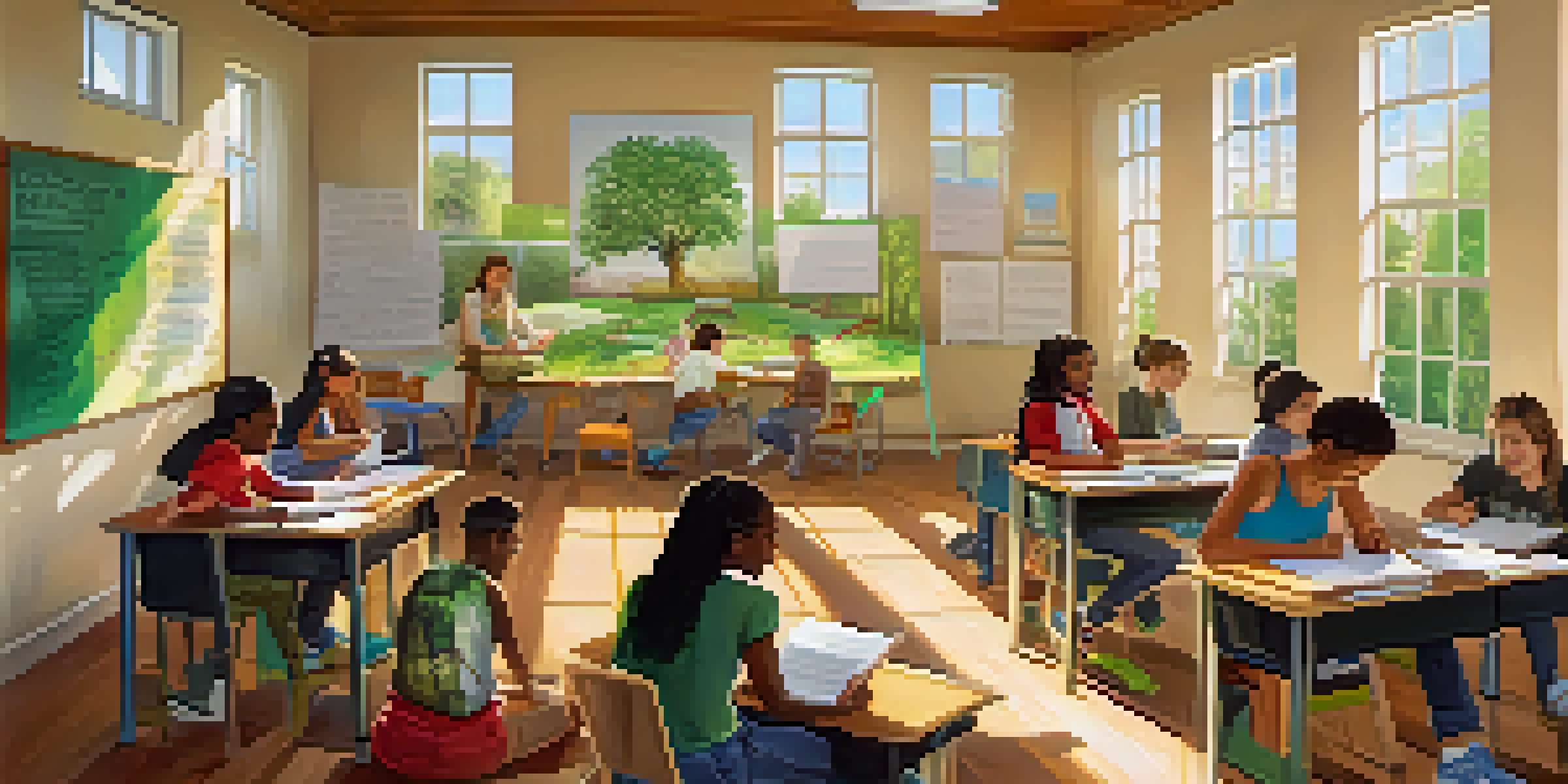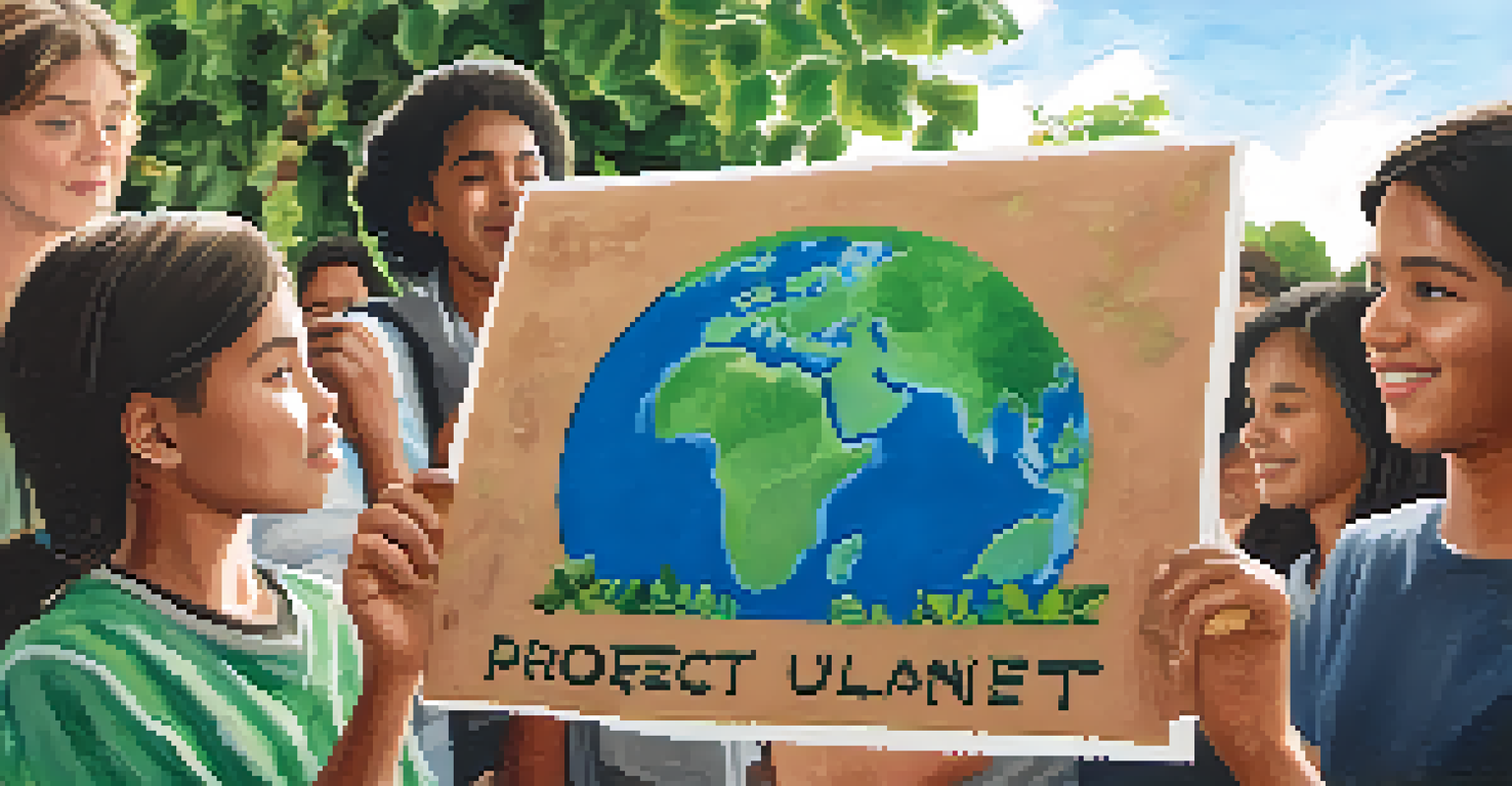Using Music to Teach Environmental Conservation to Youth

The Power of Music in Education
Music has a unique ability to resonate with people of all ages, making it an effective teaching tool. For youth, engaging with music can lead to deeper emotional connections with the subject matter. When lessons are paired with melodies, students are more likely to remember and internalize the information presented.
Music can change the world because it can change people.
For example, think about how catchy songs from childhood stick in your mind long after you’ve heard them. This same principle applies to environmental education; a well-composed song about conservation can leave a lasting impression on young listeners. By combining facts with rhythm, educators can create a memorable learning experience.
Additionally, music can foster a sense of community among students as they explore environmental themes together. When they sing about protecting the planet, they not only absorb the message but also strengthen their commitment to action.
Creating Engaging Content with Environmental Themes
To effectively engage youth, it's crucial to create music that speaks to their experiences and concerns about the environment. This could involve writing songs that address local environmental issues or celebrating nature's beauty. By focusing on relatable topics, educators can pique students' interest and spark conversations about conservation.

For instance, a song about the impact of littering in a local park can help students connect their actions to real-world consequences. This personalized approach allows for a deeper understanding of the importance of environmental stewardship. By tying music to tangible experiences, students can see the relevance of conservation in their daily lives.
Music Enhances Learning Engagement
Integrating music with education helps students form emotional connections to the material, making lessons more memorable.
Moreover, incorporating student input in the songwriting process can further enhance their engagement. When youth feel ownership over the content, they're more likely to invest emotionally and intellectually in the lessons.
Examples of Successful Music Programs
Numerous programs have successfully utilized music as a vehicle for environmental education. For instance, organizations like 'Songs for Social Change' create original songs that address various social and environmental issues, resonating with young audiences. These songs often lead to discussions and inspire action within communities.
The power of music makes all the difference in the world.
Another example is the 'Music for the Earth' initiative, which organizes concerts aimed at raising awareness about climate change. By featuring young artists and engaging performances, this program not only entertains but also educates audiences about pressing environmental issues.
These examples highlight the potential of music to create a ripple effect in promoting conservation. When youth are inspired through song, they often take their newfound knowledge and advocate for change among their peers and families.
Incorporating Interactive Music Activities
To make music a more interactive experience, educators can incorporate activities such as songwriting workshops and sing-alongs. These hands-on activities encourage students to express their thoughts on environmental issues creatively. By collaborating with their peers, they can develop a sense of teamwork while brainstorming solutions to conservation challenges.
For instance, a workshop could involve students composing their own verses about protecting the oceans. Not only does this activity foster creativity, but it also reinforces the importance of marine conservation, making the lesson more impactful. The act of creating music together serves as a bonding experience that strengthens their commitment to the cause.
Interactive Activities Boost Involvement
Hands-on music activities, like songwriting workshops, encourage creativity and teamwork while addressing environmental issues.
Additionally, integrating technology, such as music production software, can further engage tech-savvy youth. This modern approach allows them to explore their creativity while learning about environmental themes, blending passion with purpose.
Utilizing Popular Music for Conservation Messages
Popular music can be a powerful tool for spreading environmental awareness among youth. Many contemporary artists incorporate themes of sustainability and conservation into their lyrics, making it easier for young listeners to connect with these messages. By discussing these songs in the classroom, educators can spark meaningful conversations about environmental issues.
Take, for example, songs like 'Earth' by Lil Dicky, which humorously yet effectively addresses climate change. By analyzing the lyrics and discussing the underlying message, students can gain insight into the complexities of environmental problems while enjoying music that resonates with them. This approach makes learning about conservation feel less like a chore and more like a shared experience.
Moreover, teachers can encourage students to create playlists of their favorite songs that promote environmental themes. This not only fosters engagement but also empowers them to share their insights and preferences, creating a more inclusive learning environment.
Fostering a Sense of Responsibility Through Music
Music can instill a sense of responsibility in youth, helping them understand their role in environmental conservation. By hearing songs that emphasize stewardship and the importance of protecting the Earth, students are encouraged to reflect on their actions. This reflection often leads to a desire to make positive changes in their communities.
For instance, a song that highlights the urgency of reducing plastic waste can inspire students to take action by organizing clean-up efforts in their neighborhoods. When young people see the direct impact of their efforts, they are likely to feel a greater sense of ownership and responsibility toward the environment.
Community Events Promote Conservation
Musical events focused on environmental themes can unite communities, fostering discussions and actions for sustainability.
Additionally, educators can use music as a platform for students to share their environmental initiatives. This public acknowledgment can further motivate them and their peers to stay committed to their conservation efforts.
Building Community Through Musical Events
Community events centered around music can significantly amplify messages of environmental conservation. Organizing concerts, festivals, or open mic nights focused on environmental themes can bring people together to share their passion for the planet. These gatherings not only entertain but also educate attendees about pressing environmental issues.
For example, a local music festival that features environmentally-themed performances can attract diverse audiences, sparking conversations about sustainability. When community members engage with one another through music, they create a supportive environment for discussing and addressing environmental challenges.

Furthermore, such events can serve as platforms for local organizations to share resources and information about conservation initiatives. By building a strong community around music and environmental awareness, we can foster a culture of sustainability that encourages ongoing action.